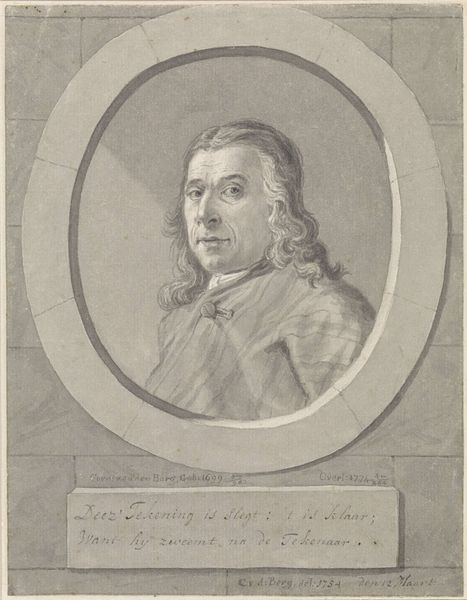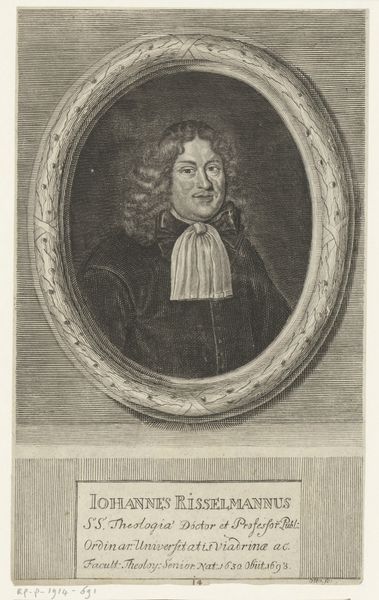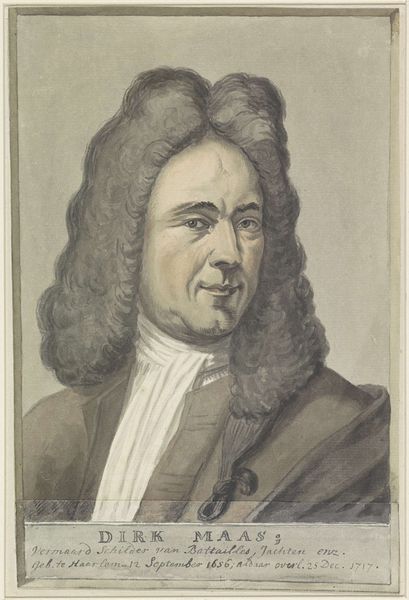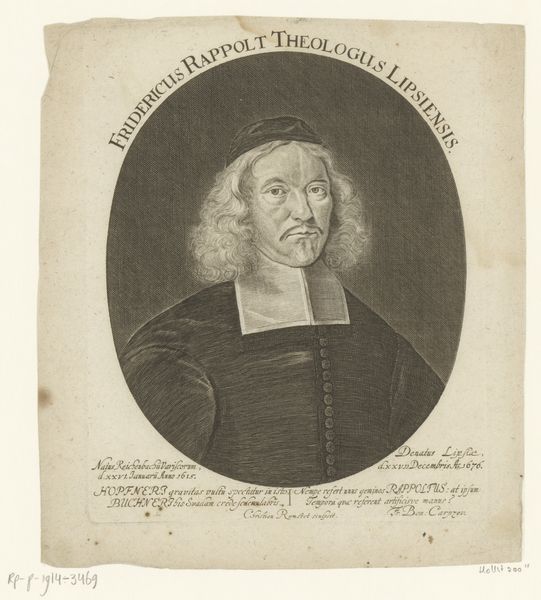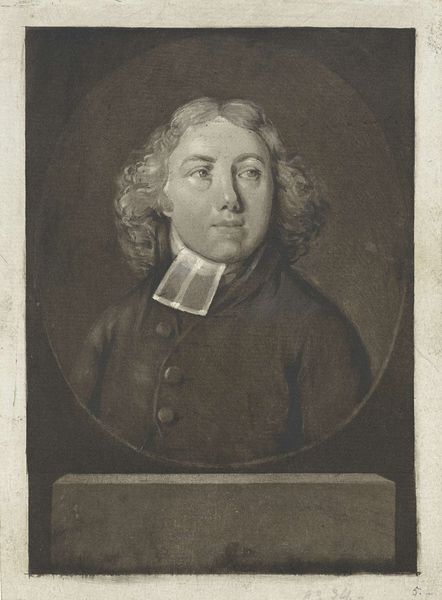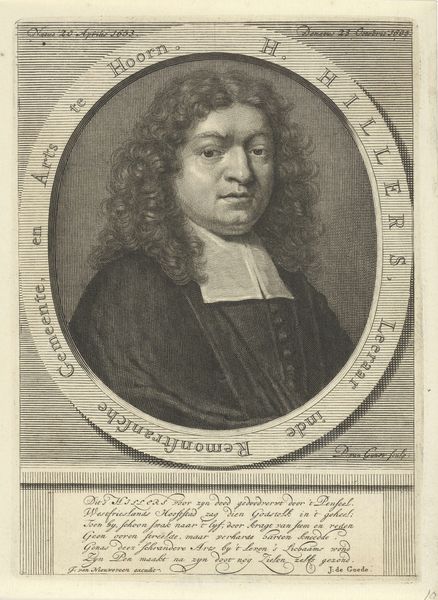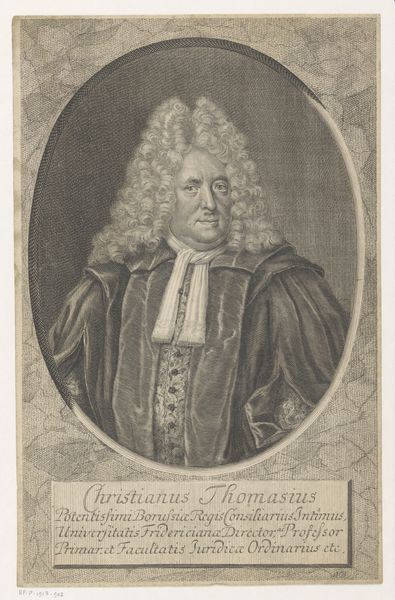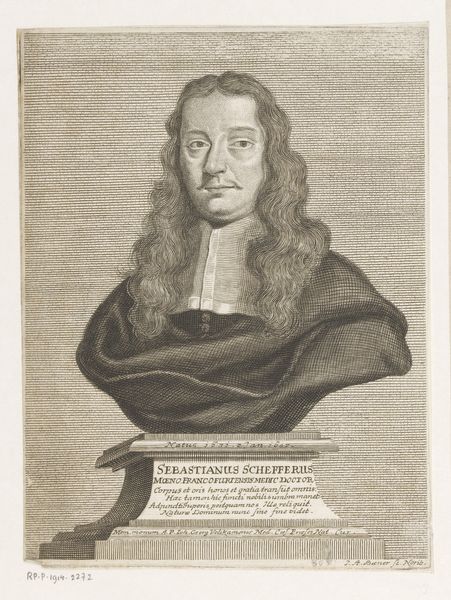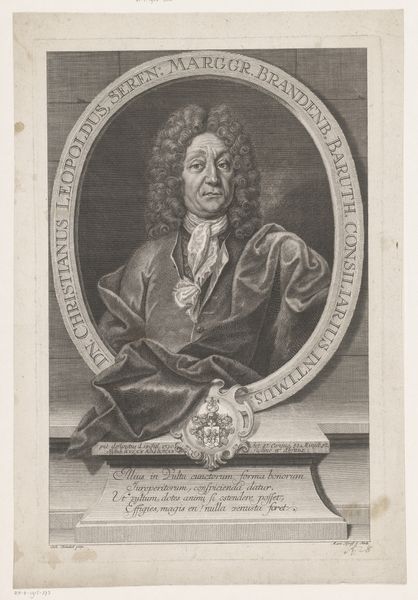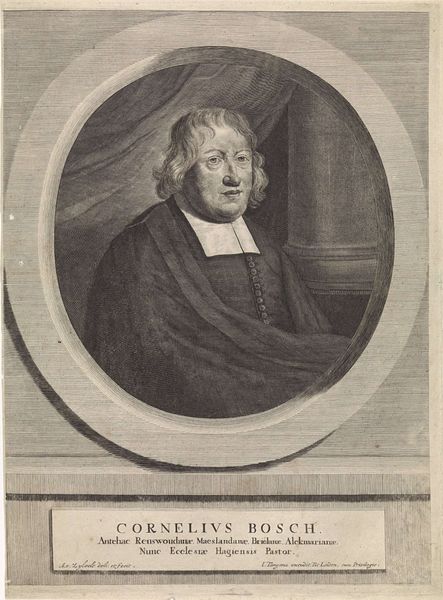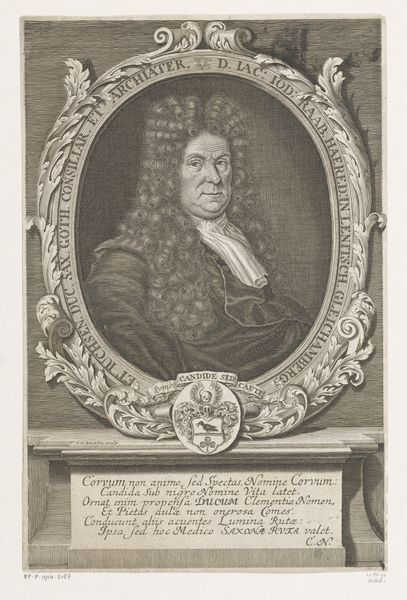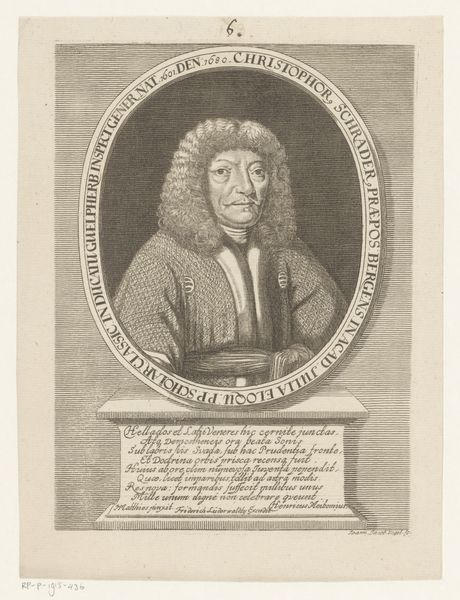
watercolor
#
portrait
#
dutch-golden-age
#
charcoal drawing
#
watercolor
#
genre-painting
#
watercolor
Dimensions: height 197 mm, width 152 mm
Copyright: Rijks Museum: Open Domain
Editor: So, here we have "Portret van Abraham de Ridder," a watercolor portrait dating back to circa 1678-1788. It's quite charming, but something about the textures feels… unconventional for a traditional portrait of this era. What stands out to you? Curator: For me, it's the overt display of the materials themselves. It’s labelled as watercolor but it also reads to me like there is charcoal layered on top to define certain textures, perhaps as a fixative to prevent smudging of the paint as the picture went from painter's hand to merchant and finally into the burgher's salon. Think of the global trade networks fueling artistic production back then; paper, pigments, even the brushes themselves. How does that framing affect your viewing? Editor: That's fascinating! So instead of just seeing the finished image, we are seeing a result from many layers of human and supply chains working in conjunction, and we can extrapolate it from brushstrokes that seem ordinary until one stops to ask about its genesis. It's not just about portraying this Abraham, but revealing the whole complex process that created the image. Curator: Exactly! And consider the role of workshops and apprenticeships. The hand of the master, perhaps, but assisted by others learning the trade. Even the mistakes or variations in brushstrokes tell a story about labor. Were the "imperfections" actually revealing the humanity behind the art? What are the socio-economic dynamics informing artistic production, then influencing the portrait’s meaning? Editor: That really changes my perspective. I was so focused on the face, but now I’m thinking about the unseen hands and global pathways that contributed to even this single image. It seems that art isn't created inside the atelier or workshop in an insular fashion, but is impacted by economic networks. Curator: It's about connecting the artwork to its broader context. This "portrait" ceases to become about celebrating the individual, and we begin to discuss networks of global connections in which art practices thrive.
Comments
No comments
Be the first to comment and join the conversation on the ultimate creative platform.
